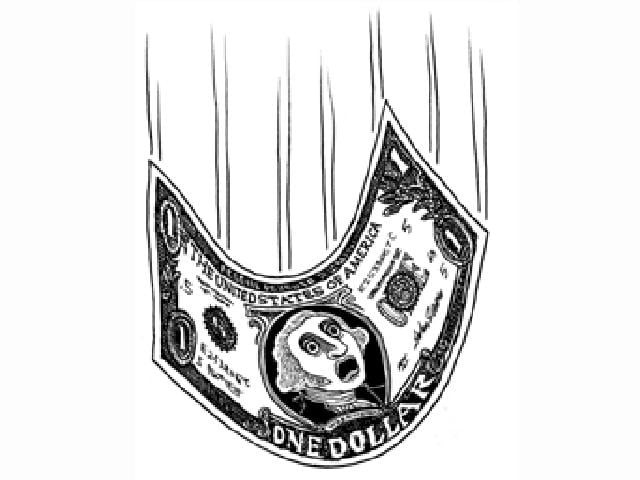Normally, in times of crises, investors tend to move towards the dollar. It is viewed as a safe haven. However, during the current crises, the dollar fell to historic lows against the yen, before the massive international central-bank intervention reversed the fall (now, the financial market will remain uncertain in the next two years. You can bet on that).
Even the Euro strengthened against the dollar and Europe is considered to be in a messy situation that needs financial discipline.
The Dollar Index, which weighs the dollar against a basket of foreign currencies, fell to 75 from 80 in January, 2011. This may not seem like a big change, but in the currency markets, these changes are pretty dramatic.
Decreasing investor confidence
I wouldn't say that this fall is the beginning of the end for the dollar but it is certainly another sign of the increasing lack of confidence in the currency as a safe haven. Investors are moving into real assets such as gold and silver and taking long positions in agricultural commodities like wheat, corn, soybean, rice and sugar to protect their wealth as they navigate through tumultuous times.
This change in psychology will be critical for foreign investors in the future as inflation continues to move higher (to around 5-7 per cent according to Sam Zell, the Real Estate billionaire), and begins to more seriously affect foreign interest in US bonds, and ultimately stocks as well (stocks might take a 30 per cent plunge going forward).
If foreign investors start decreasing their massive support for US stock and bond markets, both the dollar and those markets will begin to suffer an irreversible decline (however in the short term, I think the dollar is a bit oversold and will likely rebound somewhat in the near future).
There are multiple reasons for a fall in a currency. It is not all due growing lack of confidence in the dollar. You cannot ignore the growing sense within foreign investors that the financial condition of the US government is weakening.
US planning its own fall
It is front page news that the US has too much debt and is doing little about it. In fact, it is only adding to it at increasing rates. Even worse is that the US is making it easier to add debt through either printing massive amounts of money, quantitative easing, monetary accommodation, interest rate stabilisation, balance sheet expansion or the QE3 program.
Two of the most important indicators of whether the dollar will do well, are foreign inflows of capital into the US bond and the stock market. By monitoring the changes in the remainder of the year, you will have a better idea for whether foreign investors are getting increasingly nervous about the dollar or not. The Municipal bond due payment is currently around $135 billion. These kinds of changes do not happen quickly, but when they do, they are hard to reverse.
‘If the US defaults on its debt it would be catastrophic’
According to JP Morgan Chase and Co CEO Jamie Dimon, companies, insurance funds and investors would lose access to the markets if the US appears to be heading towards a default related to its debt limit.
“If the United States actually defaults on our debt it would be catastrophic” Dimon said while addressing the US Chamber of Commerce event in Washington. Asked further what may happen if the US fails to increase its $14.29 trillion debt limit, he said “companies like us, every single company with treasuries, every insurance fund, every requirement, will start snowballing. All short-term financing would disappear.”
US Senator Marco Rubio, a Florida Republican, has said he will not approve a debt-limit increase without a range of tax-and-spending reforms. Moreover, he said the US needs to use the debt limit itself as the way to ensure that America’s debt limit begins to decline, not always go up.
“How about the debt limit starting to go down? These are the kinds of things that I hope will be focused on.”
US debt is expected to touch $19 trillion in the next 4 years.
Treasury Secretary Timothy F Geithner has said the nation will suffer “catastrophic damage” if it loses investors’ confidence. He also has said it would be “unworkable” to give priority to payments on the national debt over other government obligations.



COMMENTS
Comments are moderated and generally will be posted if they are on-topic and not abusive.
For more information, please see our Comments FAQ